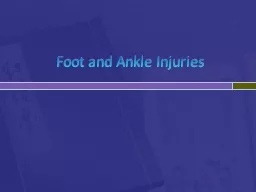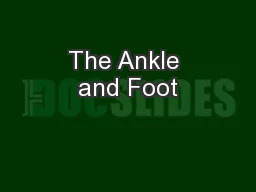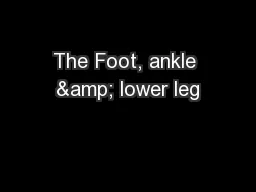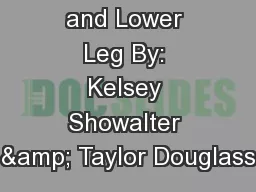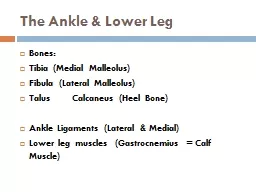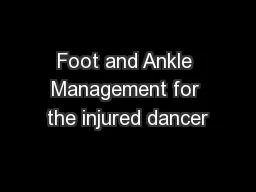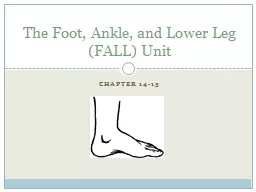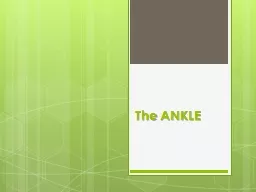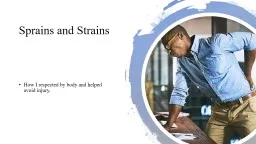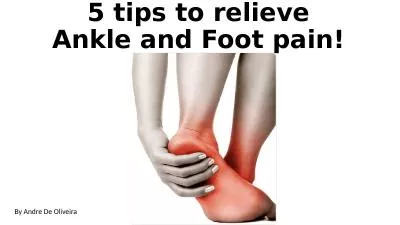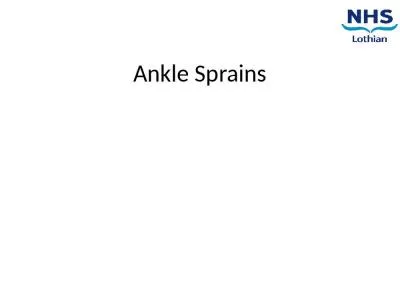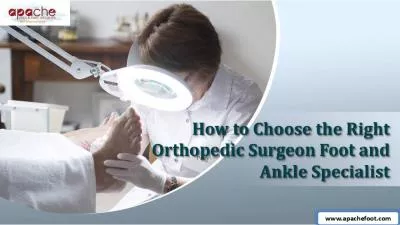PPT-Foot and Ankle Injuries Ankle Sprains
Author : samantha | Published Date : 2022-02-15
Most common lower leg injury Classified as to degree of ligamentous severity Lateral ankle sprain Mechanism Inversion and plantar flexion Anterior talofibular
Presentation Embed Code
Download Presentation
Download Presentation The PPT/PDF document "Foot and Ankle Injuries Ankle Sprains" is the property of its rightful owner. Permission is granted to download and print the materials on this website for personal, non-commercial use only, and to display it on your personal computer provided you do not modify the materials and that you retain all copyright notices contained in the materials. By downloading content from our website, you accept the terms of this agreement.
Foot and Ankle Injuries Ankle Sprains: Transcript
Download Rules Of Document
"Foot and Ankle Injuries Ankle Sprains"The content belongs to its owner. You may download and print it for personal use, without modification, and keep all copyright notices. By downloading, you agree to these terms.
Related Documents

